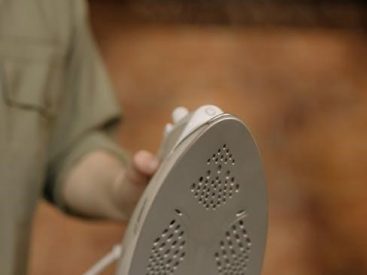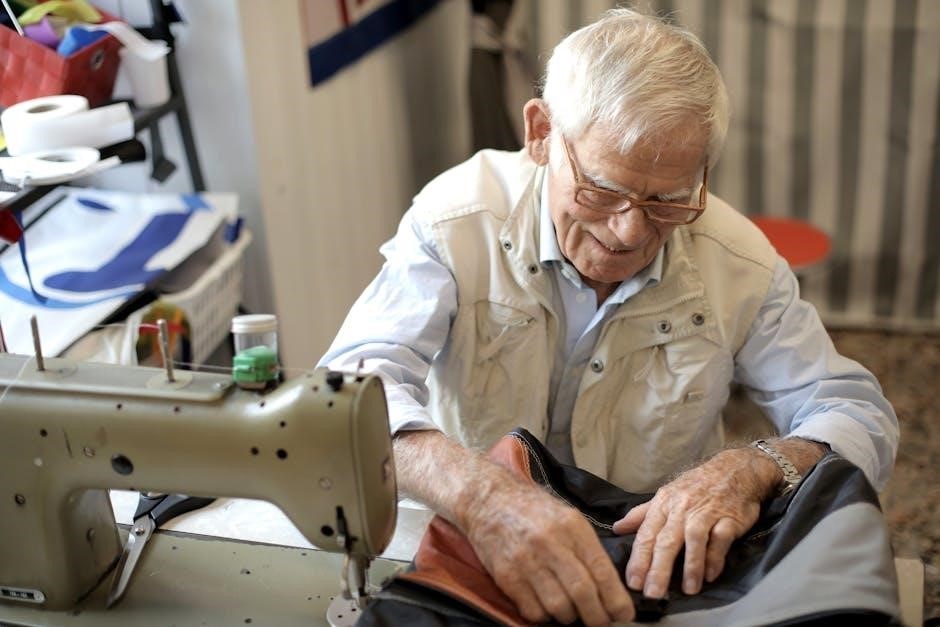Kidde Nighthawk Carbon Monoxide Detector⁚ A Comprehensive Guide
This guide provides a detailed overview of Kidde Nighthawk carbon monoxide detectors, covering installation, operation, troubleshooting, and safety precautions․ Learn about different models, digital display readings, and maintenance to ensure optimal home safety․
Understanding Carbon Monoxide Poisoning
Carbon monoxide (CO) is a colorless, odorless, and tasteless gas produced by the incomplete burning of fuels like natural gas, propane, oil, wood, and charcoal․ It’s a significant health hazard because it binds to hemoglobin in the blood, reducing the oxygen-carrying capacity․ Symptoms of CO poisoning can range from mild headaches and dizziness to nausea, vomiting, and confusion․ In severe cases, it can lead to loss of consciousness, brain damage, and even death․ Prolonged exposure to even low levels of CO can cause long-term health problems․ CO poisoning is particularly dangerous because its symptoms are often mistaken for the flu or other common illnesses, delaying diagnosis and treatment․ Early detection is crucial, and installing and maintaining a CO detector, like the Kidde Nighthawk, is essential for preventing CO poisoning and ensuring the safety of your family and home․ The silent nature of CO makes detection devices like the Kidde Nighthawk vital for protecting against this insidious threat, offering peace of mind and a critical early warning system for this life-threatening gas․
Kidde Nighthawk Models⁚ KN-COPP-B-LP and KN-COPP-3
The Kidde Nighthawk line offers two primary models⁚ the battery-operated KN-COPP-B-LP and the plug-in KN-COPP-3․ The KN-COPP-B-LP is a battery-powered unit, providing continuous CO monitoring even during power outages․ Its reliance on readily available AA batteries offers flexibility in placement, making it ideal for locations without convenient access to electrical outlets․ This model features a digital display showing current CO levels in parts per million (PPM), allowing for easy monitoring․ Conversely, the KN-COPP-3 is a plug-in model powered by 120VAC, offering a permanent, always-on solution․ This model also incorporates a 9V battery backup to maintain functionality during power disruptions, ensuring uninterrupted protection․ Both models utilize advanced sensor technology to detect CO levels as low as 30 PPM and provide a loud, clear alarm to alert occupants in case of dangerous CO buildup․ Choosing between these models depends on your specific needs and preferences regarding power sources and installation locations․ Both offer reliable protection against the invisible threat of carbon monoxide․
Installation and Placement of the Detector
Correct placement is crucial for effective carbon monoxide detection․ For optimal performance, install your Kidde Nighthawk detector on a wall or ceiling, at least 12 inches from any potential heat source, such as a furnace or fireplace․ Avoid locations where it might be obstructed by furniture or other objects that could impede CO airflow to the sensor․ The ideal location is typically near bedrooms and living areas, where people spend the most time․ Remember, carbon monoxide is odorless and colorless; a strategically positioned detector acts as an early warning system․ Follow the manufacturer’s instructions carefully, ensuring the unit is securely mounted and the connections are tight․ For the KN-COPP-B-LP battery model, confirm the batteries are correctly installed and the cover is securely closed․ The KN-COPP-3 plug-in model should be firmly inserted into a wall outlet․ After installation, test the alarm to ensure it’s functioning correctly․ Regularly check the detector to confirm that it’s still operational and in a suitable location․ Proper installation significantly enhances its ability to protect your family․
Battery Operation and Replacement (KN-COPP-B-LP)
The Kidde Nighthawk KN-COPP-B-LP model operates on three AA batteries, providing continuous monitoring even during power outages․ A low-battery warning signal will alert you when the batteries need replacing․ This typically involves a chirping sound, prompting timely battery replacement to maintain uninterrupted CO detection․ To replace the batteries, locate the slide-out battery door, usually situated at the bottom of the unit․ Gently slide the door open to access the battery compartment․ Remove the depleted batteries and insert fresh, alkaline AA batteries, ensuring they are correctly oriented according to the polarity markings inside the compartment․ Once the new batteries are in place, slide the door closed until it clicks securely shut․ After battery replacement, always test the alarm to confirm its proper functionality․ Using high-quality alkaline batteries is recommended for longer life and reliable operation․ Remember to replace batteries at least once a year, or sooner if the low-battery warning signal sounds, to ensure the continuous safety provided by your carbon monoxide detector․
Power Requirements and Backup Battery (KN-COPP-3)
The Kidde Nighthawk KN-COPP-3 model is designed for convenient plug-in operation, requiring a standard 120VAC, 60Hz power source․ This ensures continuous monitoring as long as the unit remains plugged into a functioning electrical outlet․ However, a crucial safety feature is the inclusion of a 9-volt backup battery․ This battery automatically engages if a power outage occurs, guaranteeing uninterrupted carbon monoxide detection even during electricity disruptions․ The backup battery ensures your home’s safety is not compromised during unforeseen power failures․ The digital display will indicate when the backup battery needs replacing․ To replace the 9-volt battery, consult the specific instructions within your KN-COPP-3 user manual․ Remember to test the alarm regularly to confirm that both the primary power and backup battery functionalities are working correctly․ Regular testing and battery replacement are vital for maintaining the effective performance of your carbon monoxide detector and safeguarding your family․ Always use a fresh 9-volt battery for optimal backup power duration․
Digital Display and CO Level Readings
The Kidde Nighthawk carbon monoxide detectors, particularly models like the KN-COPP-B-LP and KN-COPP-3, feature a user-friendly digital display․ This display provides clear, real-time readings of carbon monoxide (CO) levels in parts per million (ppm)․ The numerical readings allow for precise monitoring of CO concentrations in your home’s air․ This is a significant advantage over traditional alarms that only offer a simple audible alert․ By observing the digital display, you can quickly assess the severity of any CO buildup․ Low levels might indicate a minor issue requiring investigation, while higher readings necessitate immediate action and evacuation․ The digital display also aids in understanding the history of CO levels detected, providing valuable information for identifying potential sources and taking preventative measures․ Remember that even seemingly low levels of CO can be harmful over time․ Regularly check the digital display to stay informed about your home’s air quality and react promptly to any changes or elevated readings․ This proactive approach significantly enhances your family’s safety and well-being․
Troubleshooting Common Issues
If your Kidde Nighthawk CO detector displays an error, malfunctions, or produces unusual sounds, consult this troubleshooting guide․ A consistently chirping alarm often signals low battery levels; replace them promptly using the instructions provided in your manual․ If the alarm continues to chirp after battery replacement, the sensor might be faulty, requiring professional inspection or unit replacement․ A non-functioning alarm may indicate a power supply problem (for plug-in models) or require battery replacement (for battery-operated models)․ Ensure the unit is correctly installed and the power is functioning․ If the digital display shows erratic readings or fails to show any readings at all, this could point to a sensor malfunction or internal component failure․ In case of a persistent alarm despite no apparent CO source, check for obstructions near the sensor, ensuring adequate airflow around the detector․ If problems persist after trying these basic troubleshooting steps, contact Kidde customer support or a qualified technician for assistance․ Never attempt to repair the detector yourself; doing so may void your warranty and compromise safety․
Alarm Sounds and Their Meanings
Understanding your Kidde Nighthawk carbon monoxide detector’s alarm sounds is crucial for prompt and effective responses․ A loud, pulsating alarm signifies a dangerous level of carbon monoxide detected in your home․ Immediately evacuate the premises and seek fresh air․ Contact emergency services and inform them of the situation․ Do not re-enter the building until emergency responders have cleared the area and the CO levels have been confirmed safe․ A chirping sound, usually a short, intermittent beep, indicates a low battery condition․ Replace the batteries promptly to ensure continuous and reliable monitoring․ A steady beep or a different type of chirp could signal a malfunctioning sensor or other internal problems․ Refer to your manual for specific instructions on interpreting these alternative sounds․ If you are unsure about the meaning of any particular sound, it is always best to err on the side of caution, evacuate immediately, and contact emergency services or a qualified technician for assistance․ Prompt action is crucial when dealing with potentially life-threatening situations․
Maintenance and Lifespan of the Detector
Regular maintenance is vital for ensuring the longevity and effectiveness of your Kidde Nighthawk carbon monoxide detector․ At a minimum, test the unit monthly by pressing the test button; this verifies that the alarm is functional and the sound is audible․ Replace the batteries at least once a year, or sooner if the low-battery warning chirps․ The type of battery required (AA or 9V) depends on your specific model․ Keep the detector clean by gently dusting it with a soft cloth; avoid using harsh chemicals or abrasive cleaners․ Never paint the unit, as this can interfere with its sensors and functionality․ The recommended lifespan for most Kidde Nighthawk CO detectors is approximately 7 years․ After this period, replace the unit with a new one, regardless of whether it appears to be functioning correctly․ Sensor degradation over time can compromise the detector’s accuracy, making regular replacements crucial for continued safety․ Note that some models may have a digital display indicating the end-of-life, providing a clear visual alert when it’s time for replacement․ Following these maintenance steps ensures accurate and reliable CO detection in your home․
Interconnectivity with Other Kidde/Nighthawk Alarms
Enhance your home’s safety network by connecting your Kidde Nighthawk carbon monoxide detector with other compatible Kidde/Nighthawk smoke and CO alarms․ This interconnectivity feature ensures that when one alarm detects a threat—whether it’s carbon monoxide or smoke—all linked alarms will sound simultaneously․ This crucial interconnected system provides a significantly improved response time in emergency situations, alerting everyone in the house regardless of their location․ The process of interconnecting alarms typically involves a simple procedure outlined in the individual alarm’s user manual; often involving the use of a test/interconnect button․ Consult the specific instructions for your Kidde Nighthawk model and other connected alarms to ensure proper installation and functionality of the interconnectivity feature․ This whole-home approach creates a unified warning system, maximizing protection and providing peace of mind․ Remember to periodically test the interconnectivity to confirm all alarms are correctly linked and functioning as a unified system․
Safety Precautions and Child Safety
Prioritize safety when installing and using your Kidde Nighthawk carbon monoxide detector․ Mount the unit high on a wall, out of reach of children, to prevent tampering․ Never allow children to play with the alarm or its components; explain the importance of the device and the seriousness of carbon monoxide poisoning․ Regularly check the alarm’s functionality to ensure it’s operating correctly․ In case of a malfunction, replace the unit promptly, avoiding any potential safety hazards․ Remember that the detector is a crucial safety device, not a toy․ Teach children the meaning of the alarm sounds and the appropriate response⁚ evacuate immediately and call emergency services․ Keep the user manual readily accessible for easy reference regarding troubleshooting and maintenance․ Ensure that batteries are installed correctly and replaced as needed, following the instructions in the manual․ A functioning carbon monoxide detector is a critical part of home safety, demanding consistent attention and responsible handling, especially around children․
Responding to a Carbon Monoxide Alarm
A sounding Kidde Nighthawk carbon monoxide alarm demands immediate action․ Do not ignore the alarm; carbon monoxide is odorless and deadly․ First, evacuate your home immediately, moving to a well-ventilated area outdoors or to a neighbor’s house․ Once outside, call emergency services (911 in the US) and inform them of the situation․ Do not re-enter your home until emergency responders have arrived and declared it safe․ If anyone is experiencing symptoms of carbon monoxide poisoning such as dizziness, headache, nausea, or weakness, seek immediate medical attention․ After the emergency services have assessed the situation and declared the home safe, investigate the potential source of the carbon monoxide leak․ This might involve checking appliances, furnaces, or any other potential combustion sources․ If the alarm continues to sound after the source has been addressed, contact a qualified technician for further investigation and repair․ Remember, your life and the lives of your loved ones depend on swift and appropriate action in response to a carbon monoxide alarm․


